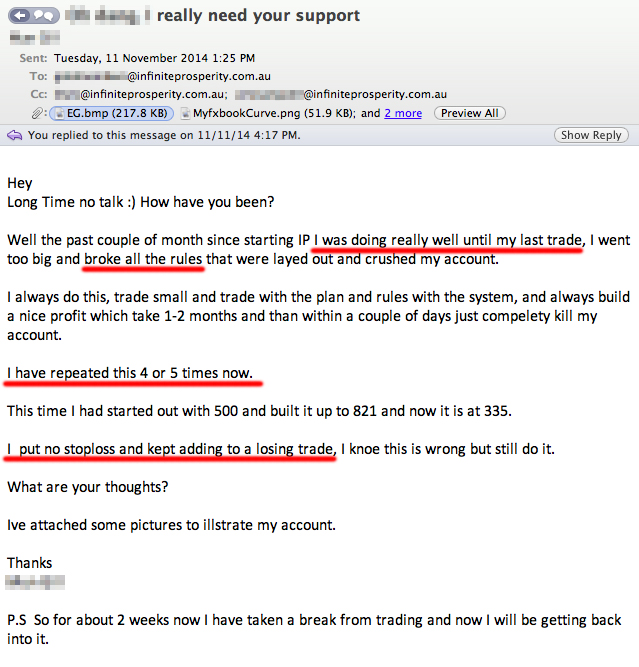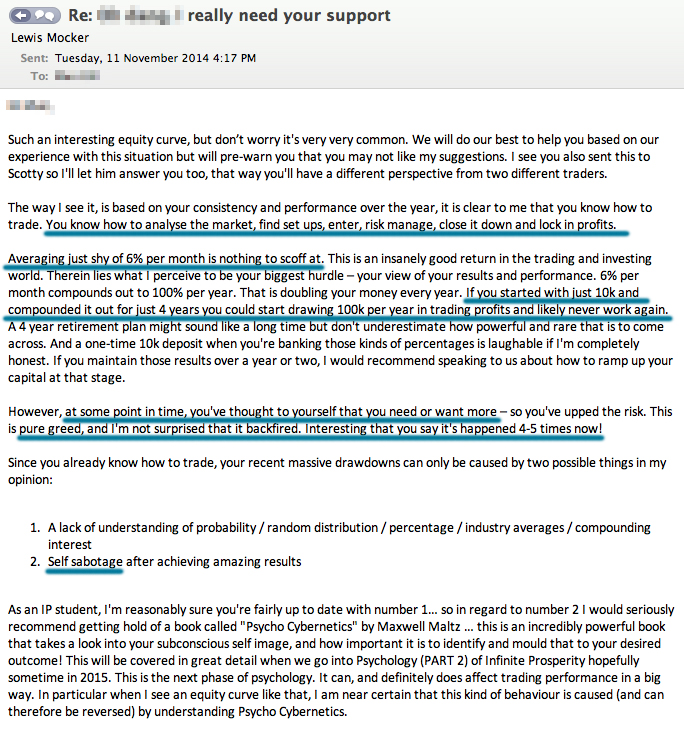Self Sabotage in Forex Trading
Put a new and aspiring trader in a room with a professional, and grant the rookie 3 questions… what does he ask?
1. What indicators do you use?
2. Which pairs do you trade?
3. What are your <insert indicator here> settings?
In a recent analytics review of our inquiries inbox, these are actually the most commonly asked questions by new traders with limited experience.
The reason for this article is to shed some light on this phenomenon and go a little deeper.
The truth is that copying a professional’s indicator settings in an attempt to become a professional trader is comparable to buying the same shoes as Usain Bolt in an attempt to get to the Olympics for sprinting. Yes, the shoes may provide slight advantages to increase performance… but just like indicator settings, this has VERY little to do with your chance of becoming a professional trader.
One of the biggest hurdles we note among students is the concept of “self-sabotage”. This is a tricky topic to approach since those who suffer from it can rarely self-identify the curse. Further, even when an authoritative source points it out and provides evidence to support the diagnosis, many subjects will refuse/deny/reject/defend the claims.
Some time ago, a student of ours sent in the following email:


Before we go on… Let’s make something clear: 5.91% (including the initial learning curve, adjusting into new strategies etc) is an incredible monthly return while keeping risk capped at 1% per trade. As I point out in my reply, a 6% monthly return with just a 10k starting balance (with no further deposits), left to compound, could turn into a 100k per year (semi-passive) income in just 4 years. As I’m sure you can agree, this is a mind-blowing prospect for anyone who would otherwise have another 20-40 years in the workforce.
Here’s what I said:



This is a VERY COMMON progress curve that can be seen not only among traders but with many new business owners, dieters and lottery winners alike.
Just like a rubber band returns to its original size when stretched – your income, net worth, waistline, health, and happiness will also return to your pre-determined subconscious self-image if it is stretched by an external force.
The moral of this story is to learn more about yourself.
You owe it to yourself to learn how your subconscious mind controls the results you see in your life. The great news is that your self-image can be reprogrammed to help your “automatic success mechanism” hurl you toward the life you truly want (and rightfully deserve).
In the first lesson of Infinite Prosperity, we explain that the top 4 risks in trading are:
- Not knowing the risk.
- Not knowing the reward.
- Not knowing the probability of reward-to-risk.
- Not knowing oneself.
If this message resonates with you, and you think you may need to make some progress in this area – we strongly recommend grabbing a copy of “Psycho-Cybernetics” by Maxwell Maltz.
It could just change your life!



Leave a Comment